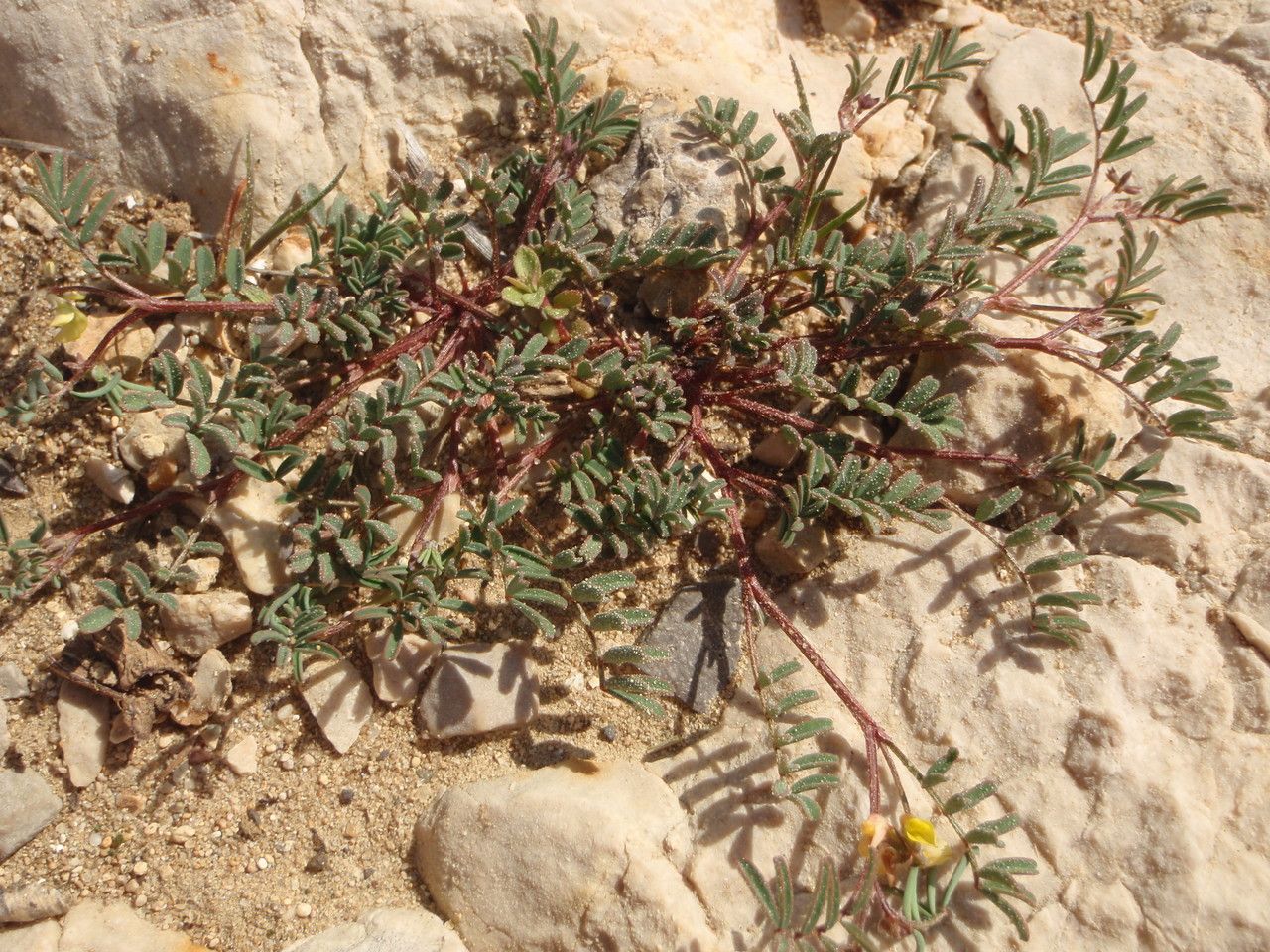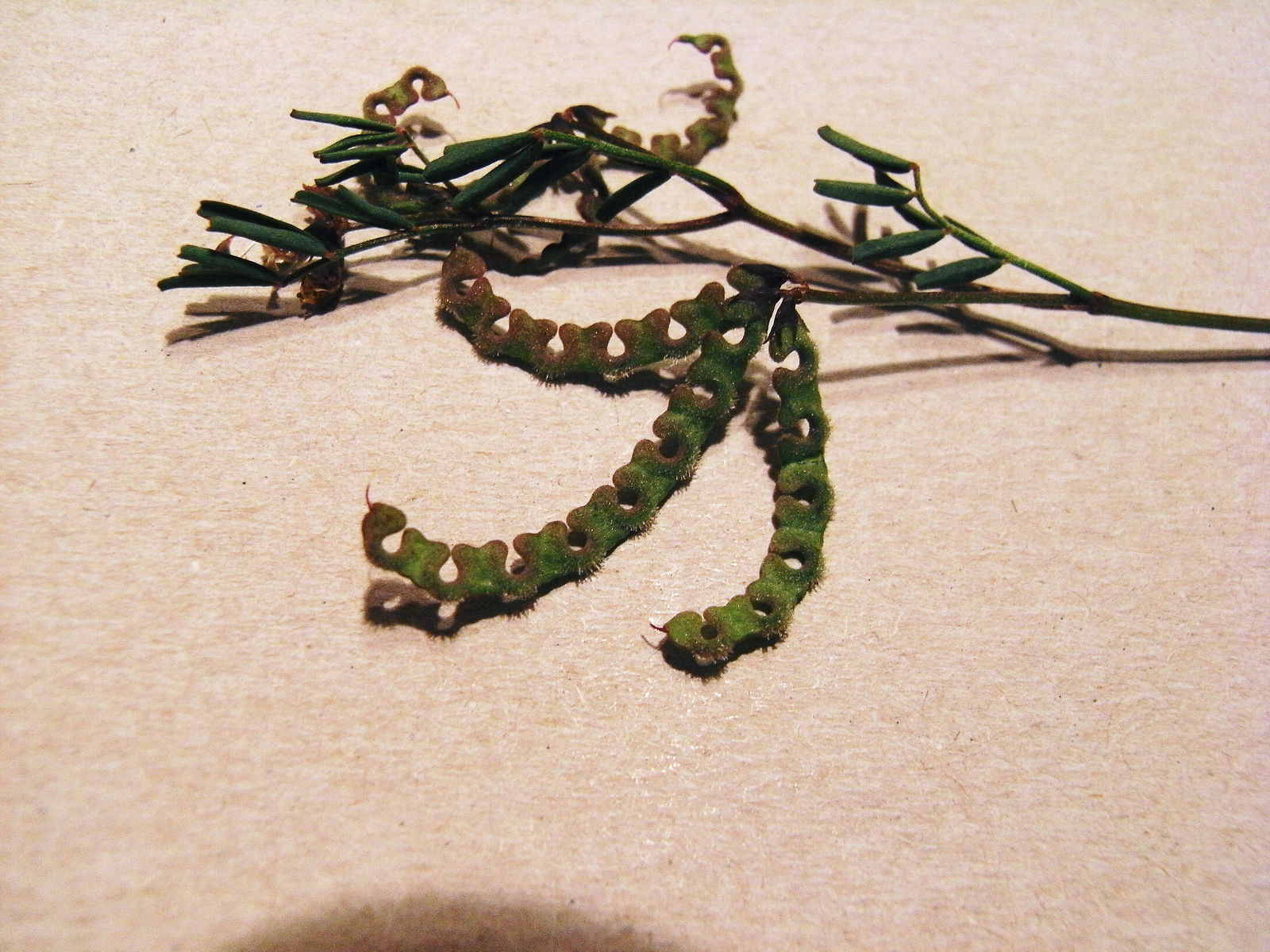Toothed Scorpiurum
hippocrepis ciliata
Also known as: ["Scorpiurus ciliatus"]
Overview
A low-growing annual herbaceous plant in the pea family, known for its distinctive crescent-shaped pods.
Benefits & Perks
["drought tolerant","wildlife attractant (bees, butterflies, birds)"]
Botanical Classification
| Phylum: | Magnoliophyta |
| Class: | Magnoliopsida |
| Order: | Fabales |
| Family: | Fabaceae |
| Genus: | Hippocrepis |
| Botanical Name: | Hippocrepis ciliata |
Plant Characteristics
Basic Information
- Category: Flowers
- Suitable Location: rock gardens, sunny borders, or containers in temperate climates
- Suitable For:
- Is Weed: No
- Allergenicity: low
Environmental Needs
- Climate: {"temperatureRange":"5–35°C"}
- Hardiness: {"zones":"8–10"}
- Misting: rarely required, only if ambient humidity is very low
- Drainage: Fast-draining to prevent waterlogging and root rot.
- Soil Type: Well-draining, slightly sandy soil with some organic matter. A cactus or succulent mix amended with perlite works well.
Maintenance Level
- Maintenance Level: low
- Toughness Level: moderate
- Pruning Frequency: Annually in late winter or early spring, or as needed to remove dead/damaged growth.
- Pruning Intensity: Moderate pruning to shape the plant and remove up to one-third of the growth if necessary.
Care Details
Ideal Sunlight Coverage:
Bright indirect light for 6–8 hours daily. Can tolerate some direct morning sun but avoid harsh afternoon sun, especially in summer.
Sunlight Tolerance Tips:
Acclimate plants gradually to direct sunlight to prevent scorching. Indoors, place near an east or south-facing window with sheer curtains. Outdoors, provide partial shade during peak sun hours.
Care Requirements
Care Difficulty
easymoderate
Sunlight
full sun to partial shade
Rotate plant weekly for even growth; use sheer curtains to filter intense light; avoid direct afternoon sun.
Watering
every 7–10 days during active growth, reduce in winter
Water thoroughly until it drains from the bottom; allow soil to dry between waterings; adjust frequency based on season and growth stage.
Soil
well-draining, sandy loam with some organic matter
pH: Slightly acidic to neutral, pH 6.0–7.0.
Use fast-draining soil; avoid heavy clay mixes; ensure pots have drainage holes.
Temperature
Prefers moderate temperatures between 60–75°F (15–24°C). Can tolerate cooler temperatures down to 50°F (10°C) but avoid prolonged exposure to frost.
Avoid sudden temperature fluctuations; protect from frost; maintain moderate humidity during hot periods.
Fertilizing
every 4–6 weeks during spring and summer, none in winter
Dilute fertilizer to prevent burn; fertilize during active growth; flush soil occasionally to prevent salt buildup.
Propagation
Methods
Stem cuttings or division. Stem cuttings are the most common method for home growers.
Step-by-Step Propagation Guide
- Take a healthy stem cutting.
- Apply rooting hormone.
- Plant in moist propagation medium.
- Maintain humidity.
- Wait for roots to develop.
Best Time: Spring or early summer when the plant is actively growing.
Environment
Warm, humid environment with indirect light. Maintain temperatures around 70–75°F (21–24°C) and high humidity (60–70%).
Medium
Well-draining potting mix, such as a mix of perlite and peat moss, or cactus/succulent soil.
Hormone
Rooting hormone is recommended to improve success rates.
Timeline
Roots typically develop in 3–6 weeks. New growth may appear after 2–3 months.
Tools Needed
Pruning shears, rooting hormone, small pots, propagation medium, plastic bags or humidity dome.
Quick Tips
Use healthy, non-flowering stems; keep soil consistently moist but not waterlogged; provide bottom heat if possible.
Pruning & Repotting
Pruning Guide
Method
Use clean, sharp tools to make clean cuts just above a leaf node or bud. Remove crossing or crowded branches to improve structure.
Pruning Plan
Prune to maintain shape, encourage bushier growth, and remove dead or diseased parts. Pruning also helps improve air circulation and light penetration.
Tools
Pruning shears, sterilizing solution, gloves.
Checklist
Sterilize tools; prune during dormancy; remove dead/diseased parts; shape the plant; clean up debris.
Repotting Guide
Best Season
Spring, before the active growing season begins.
Pot Size
Choose a pot one size larger than the current one, with a diameter about 2–3 inches wider.
Method
Remove the plant gently, trim any damaged roots, place in a new pot with fresh soil, and water thoroughly after repotting.
Suggestions
Repot every 2–3 years or when the plant becomes root-bound. Repotting refreshes the soil and provides more space for growth.
Checklist
Choose appropriate pot; prepare fresh soil mix; gently remove plant; trim roots if needed; place in new pot; water well.
Advanced Care Tips
Watering Mastery
Watering Checklist
Check soil moisture before watering; water deeply; ensure drainage; adjust for season.
How to Apply Water Properly
Water directly at the root zone, ensuring even moisture distribution. Water deeply to encourage root growth, and avoid wetting foliage to prevent fungal issues. Ensure excess water drains away to prevent root rot.
Watering Schedule Tips
Water deeply but infrequently, allowing the soil to dry out partially between waterings. Reduce watering in winter to once every 3–4 weeks, depending on conditions.
Soil Improvement
Add perlite or coarse sand to improve drainage; incorporate compost for fertility; ensure soil is loose and airy.
Temperature Stress Management
Signs of Temperature Issues
Chlorosis (yellowing leaves), wilting, bud drop, or stunted growth. Cold stress may cause leaf discoloration or necrosis.
Cold Stress
Low temperatures slow metabolic processes, leading to reduced growth and potential tissue damage. Prolonged cold can cause root damage or death.
Solution: Move plants indoors or to a protected location during cold spells. Provide a heat source if necessary, and avoid placing plants near drafty windows or doors.
Hot Stress
Excessive heat can cause leaf scorch, wilting, and dehydration. High temperatures may also stress the plant, reducing flowering and overall vigor.
Solution: Provide shade during peak heat, increase humidity, and water more frequently to compensate for evaporation. Ensure good air circulation to prevent heat buildup.
Fertilizing Guide
Fertilizing Checklist
Use balanced fertilizer; dilute properly; fertilize during growing season; avoid winter feeding.
Fertilizing Method
Use a balanced, water-soluble fertilizer diluted to half strength. Apply every 4–6 weeks during the growing season (spring and summer). Avoid fertilizing in fall and winter.
Common Problems & Solutions
Toxicity Warning
Cats
Non-toxicHippocrepis ciliata is not known to be toxic to cats. There are no documented cases or studies indicating adverse effects from ingestion by felines.
⚡ Toxic If:
if eaten
Dogs
Non-toxicHippocrepis ciliata is not known to be toxic to dogs. There are no documented cases or studies indicating adverse effects from ingestion by canines.
⚡ Toxic If:
if eaten
Humans
Non-toxicHippocrepis ciliata is not known to exhibit toxic properties to humans. It does not produce any known compounds that are harmful upon ingestion.
⚡ Toxic If:
if eaten
Frequently Asked Questions
Q: Is Hippocrepis ciliata suitable for container gardening?
A: While it can grow in containers, it is best suited for ground cover in outdoor landscapes due to its spreading habit.
Q: Does this plant require full sun?
A: Yes, it thrives in full sun conditions.
Q: How often should it be watered?
A: Water sparingly, as it is drought-tolerant and prefers dry to moderately moist conditions.
Quick Reference
| Family: | Fabaceae |
| Care: | easy |
| Light: | full sun to partial shade |
| Water: | every 7–10 days during activ |
Get Expert Care Tips
Download the Plantious app for personalized care reminders and plant identification!
Google Play App Store






